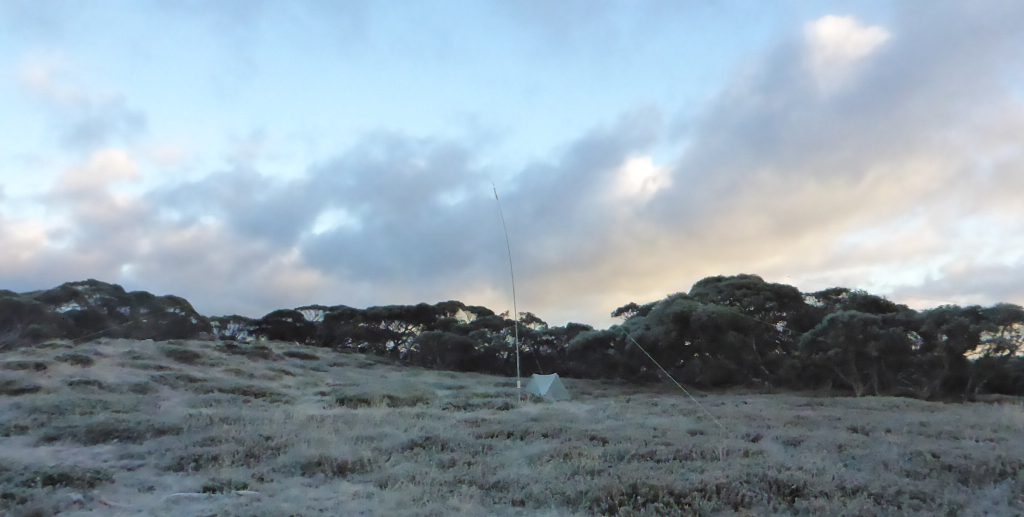 The motivation for this trip was a proposal on the SOTA_Australia mailing list to attempt some 160m summit to summit contacts. Originally I was thinking of using my kite antenna, but soon realised that the evening was likely to be the preferred operating time and so a kite may not be such a viable option. I rapidly put together a loaded vertical antenna and planned for a night out on the top of Mt Lovick which appeared to be drive up. It didn’t quite work out as I thought, but I still achieved most of the objectives of the weekend.
The motivation for this trip was a proposal on the SOTA_Australia mailing list to attempt some 160m summit to summit contacts. Originally I was thinking of using my kite antenna, but soon realised that the evening was likely to be the preferred operating time and so a kite may not be such a viable option. I rapidly put together a loaded vertical antenna and planned for a night out on the top of Mt Lovick which appeared to be drive up. It didn’t quite work out as I thought, but I still achieved most of the objectives of the weekend.
I headed off late Friday afternoon and drove to Sheepyard Flat campground on Brocks Rd in the Howqua Hills historic area. On Sat morning I quickly packed up camp and headed for the first target of the day – Rocky Ridge VK3/VE-047. I parked in a spacious clearing on Bluff Link Rd just past the Refrigerator Gap Rd junction.
There is a well defined walking track from this clearing all the way down to 8 Mile Flat that goes within about 20m of the summit of Rocky Ridge. It was thus quite an easy walk of about 40 mins with a 275m elevation gain. The summit area is quite small and has a few medium sized trees, so I had to go down the hill some way to get the 80m EFHW into the air.
Getting on air just after rollover, propagation was not too bad with six contacts on 40m SSB and two on 80m – mostly outside VK3.
It was a shorter 20 min easy walk back to the car.
I drove about 1km further along Bluff Link Rd to the car park at the start of the track to The Bluff. I decided to take the shorter, but steeper route thinking it might be quicker (the other route is from Bluff Hut along the plateau, but is 2km longer each way).
The climb up the shorter path is steady uphill for about 2/3 of the distance.
It then becomes very steep and involves scrambling up a rocky path that almost needs a rope! I would not recommend this path unless you are fit and have good balance. The distance is only 1.7km, but there is 420m vertical climb! It took many rest stops and a total of an hour to get to the top.
The Bluff has a very large and largely treeless summit. I did manage to find one dead tree to tie the squid pole to a few meters down from the summit in its lee due to the fairly brisk wind. Getting on air around 2:40pm, I first tried 40m and had only 3 takers. One was notable though – I worked Nick VK2WP on AM S2S on VK2/CT-005 a path of 500km on 10W AM. I switched to 80m and had more success there with a total of 8 contacts.
As I still had to get to Mt Lovick, I didn’t hang around long, packed up and headed back down the path to the car. Even though it was all down hill, it still took 50 mins to get back as the steep section had to be taken quite slowly as the risk of a fall was real and would have had unpleasant consequences.
Back at the car I headed up Bluff Track which is a true 4WD track that is in quite poor condition. It is only suitable for high clearance 4WDs.
I stopped briefly at Bluff Hut which looks like a great spot to camp. I continued on to Mt Lovick.
I was expecting to find the track pass very close to the summit, but in fact it’s probably 100m from the track to the actual summit. My original plan was to car camp on the summit and have a comfortable spot for an extended evening operating session. I hadn’t planned on having to pack carry my 160m antenna! Hence I had to make several trips from the car to the summit to carry the antenna, radio gear and tent up to the summit. I rapidly set up the tent and antenna in the fading light and finished just as it got dark.
At this point I hadn’t eaten dinner and all the cooking gear was still in the car! I decided to get on air and then worry about food – you’ve got to get your priorities right 🙂
I tuned the antenna for 1.843MHz and put up a spot. It wasn’t long until the other 160m ops found me and I worked 3 S2S (Warren VK3BYD, Ron VK3AFW, Gerard VK2IO) and 1 home station (John VK2YW) to qualify my first summit on 160m! Unfortunately I missed Tony VK3CAT who was still on a summit at the time.
Originally I was planning to try some 80m evening operation as well, but by the time I had qualified the summit, I was tired and hungry and decided to call it an evening. I navigated my way back to the car in the dark, made dinner and then climbed back up the summit to sleep the night hoping that the antenna wouldn’t collapse on me during the night.
Next morning, I woke to a still standing antenna and tent covered in heavy frost and around zero degrees. I have a warm sleeping bag, so had slept well with the hood drawn up around my head. I packed up the antenna and tent and headed to Lovicks Hut for breakfast. Lovicks Hut is another great camping spot.
From Lovicks Hut, Bluff Track deteriorates and there are some challenging pure rock sections as you climb up to Picture Point and then on to the junction with the Australian Alps Walking Track in a saddle between Mt Marjorie and King Billy No. 1.
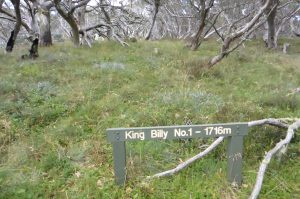
The King Billy No. 1 track is an easy walk through a snow gum woodland with a couple of rcky outcrops to climb over
The walk to King Billy No. 1 is a quite straight forward 15 min walk with only 80m vertical climb. There’s a small plateau and rock cairn at the summit with a few convenient trees for squid pole erection. It was a sunny day with light wind and very pleasant conditions for activating.
I was on air about 11:10am and soon had 8 contacts in the log equally divided between 40m and 80m. Once calls produced no more interest, headed back to the car for lunch.
My original thought was to also activate Mt Marjorie on this trip, but as I would have only started the 3.5km hike at 1:00pm, I decided that it was going to take too long if I was to be home at a reasonable time. Instead I continued on Bluff track to the junction of Brocks Rd and followed that all the way back to Sheepyard Flat. It’s 51km of gravel road which took 2.5 hours as sections were quite rough and there were numerous fallen trees that had been partially cleared. Most of the road is 2WD, but the sections up near the junction with Bluff track would have been challenging without high clearance.
From Sheepyard Flat it was another 3 hours drive back home. On the way I picked up a few South Australian parks on 40m mobile as it was also the SA parks anniversary weekend.
With the generally poor band conditions of late, I packed my new HF miniPacker 50W amp. It performed very well and probably contributed significantly to my relative ease of qualifying the summits and so the extra 900g was worthwhile. I found that using just a 2.2 Ah LiPo battery, I could comfortably do 2 activations at 40-50W. This amp has the advantage that it uses a DC-DC converter to drive the PA thus allowing it to put out it’s full power down to about 9V.
All in all, an excellent weekend with 500km and 11 hours driving! The Ford Everest handled it all very well, so it’s turning out to be an excellent SOTAmobile.
Note: Quite a few of the photos in this article are of poor quality as I had accidentally set the camera to low resolution – sorry!
Tracks and profiles
Here’s some of the tracks and profiles for those interested.

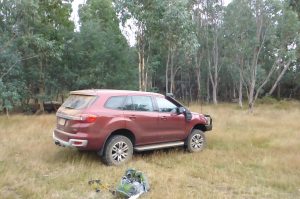
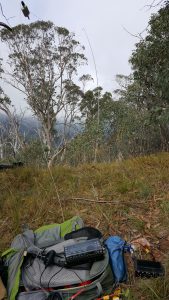
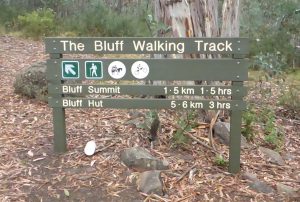
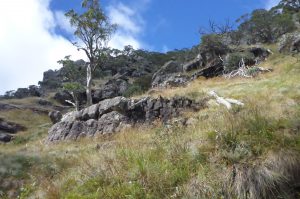
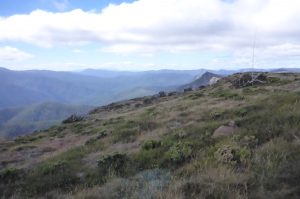
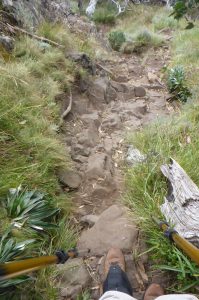
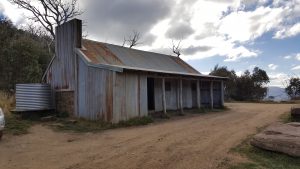
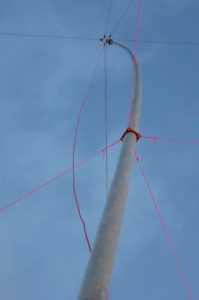
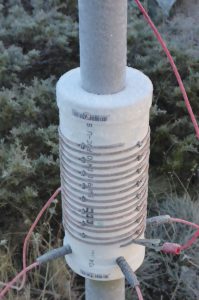
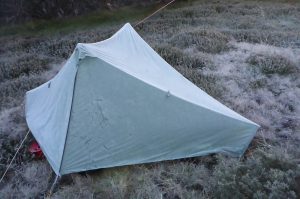
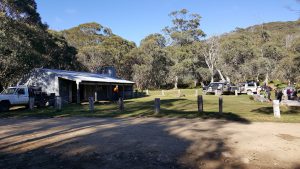
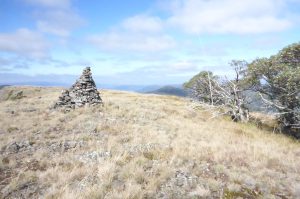
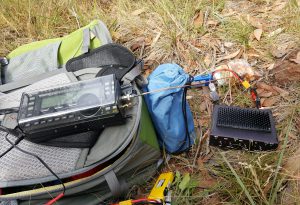
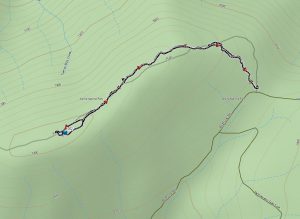
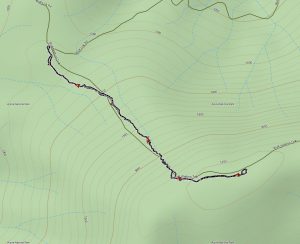
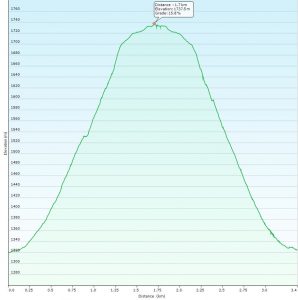
HI David
A great post and well done on the 160m activation. I must learn more about your antenna/s for 160m. I will have a bit of a search back through your blog in the first instance. I would like to try a few park activations using that band. Oh to be young again! Especially with modern, light weight small gear.
Cheers
John D
VK5BJE/VK5PF
Thanks John. The 160m antennas are written up under my “Projects” menu above. I think Parks activations using 160m would be quite feasible as long as you have a reasonable sized space available. Given propagation on 160m is limited during the day, could be better for an evening activation when you were camping in the park.
Love your antenna work David. Interested that both you and Tony used short radials 15m long. Why not use full sized 1/4 wave radials? Its not that hard to roll them out on the ground. 73 vk3hn
Thanks Paul. While it’s not too hard to roll out extra wire, a full 1/4 wavelength with 4 radials means 160m of wire which starts to add up in weight, cost and sheer bulk. I used 16 AWG wire to keep the handling easy. Rudy Severns N6LF has done a lot of work in this area that shows that it’s the number of radials that matters most rather than their length. The following paper is well worth a read: https://www.antennasbyn6lf.com/files/radial_system_design_and_efficiency_in_hf_verticals.pdf The efficiency you can expect from just 4 radials is depressingly low, but rolling out large numbers of radials for a back-pack portable antenna is not really practical. 15m is not far off 1/8 wavelength and taking this to 1/4 wavelength will do almost nothing to the antenna efficiency according to that paper.
All good. I made 4 full sized radials for 160 and only bothered to roll out 2, along the side of the summit approach road. Going perpendicular would have been almost impossible.
BTW I played your VK CW practice .mp3. Very good. I must have just missed out on this cut. For bonus points, call out the name of the operator!